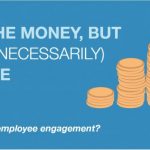Here you are – a savvy, analytical person. You make data-driven decisions, deliberately, never jumping to conclusions. You think things through to get the optimum results. Every year before Derby, you research the horses, their trainers, the best weather conditions- all before placing your bet on Golden Sunrise. To win, of course. But sometimes a tiny thought creeps into your brain: ““What about the Mega-Millions lottery? Is that a winnable wager? Could I beat the odds, finally buy that schooner I’ve craved and sail the seven seas?”
According to IQS Research, the odds of winning the Mega-Millions lottery are slightly less than hitting a ladybug in Central Park with a basketball, thrown blindly out of a helicopter. Ready to lay your cash down?
- What’s the inside scoop on the Mega-Millions? It’s a guessing game that hearkens back to that probability and statistics class you took in college.
- Why are the odds of a big payout so low? The way that the winning jackpot ticket is picked is actually a lot less favorable to you then it seems on TV.
- Break it to me gently: exactly how bad are these odds? It’d be easier to hit a specific ladybug hidden in Central Park by blindly throwing a basketball out of a moving helicopter.
- Can I hit the jackpot by buying Mega-Millions of tickets? Yes…and no.
- Can I sweeten the odds by playing my lucky number repeatedly? Not really.
What’s the Inside Scoop on the Mega-Millions?
At its heart, Mega Millions is a guessing game: the lottery association picks a set of winning numbers, and if you guess the set correctly you win at least $40 million.
The way that the lottery association picks this set of winning numbers determines how likely you are to guess correctly. This is how it works:
A container is filled with seventy white balls numbered one through seventy, and a separate container is filled with twenty-five yellow balls numbered one through twenty-five. From the seventy white balls, five are removed, and from the container of twenty-five yellow balls, one ball (called the ‘Mega-ball’) is removed. For $2, you can bet in advance exactly which balls are going to come out of the containers, and if you correctly bet which five of the white balls will come out and which yellow ball will come out, then you win at least $40 million.
Here’s what this process looks like:
While this might not seem so bad, it’s actually extremely unlikely that you’ll win: with a single lottery ticket, your chance of guessing correctly is only \(\text{1-in-}302,575,350\).
Why are the odds of a big payout so low?
To win the jackpot, you have to correctly guess the yellow Mega ball (this is the ‘easy’ part) and correctly guess which five numbers will appear on the white balls at the drawing (which is the hard part).
The ‘hard’ part: matching the five white balls
Why is this part hard? Because although there are only 70 balls in the tumbler of white balls, there are many more than 70 combinations of five balls that can come out.
In fact, there are \(\frac{70\times69\times68\times67\times66}{5\times4\times3\times2\times1} = 12,103,014\) combinations of five white balls that could come out.
The ‘easy’ part: matching the yellow Mega ball
The ‘easy’ part of winning the lottery is getting the right yellow Mega Ball®. For this part, there are only 25 different balls in the tumbler, so you have a \(\text{1-in-}25\) chance of correctly guessing which one will come out.
Succeeding in both the hard part and the easy part
So you’ll win the whole jackpot only if, in the \(\text{1-in-}{12,103,014}\) chance you get the white balls correct on your ticket, you also happen to luck into the \(\text{1-in-}25\) chance of guessing the yellow Mega Ball®, which has a \(\text{1-in-}(25\times12,103,014) = \text{1-in-}302,575,350\) chance of happening.
Break it to me gently: exactly how bad are these odds?
To see how extremely small your chances of winning are, consider the following alternative to the lottery, which has essentially the same chance of winning.
Suppose an eccentric billionaire offers you the following chance to become rich.
Somewhere in New York City’s Central Park, the eccentric billionaire releases a pet ladybug. Afterwards, the billionaire flies you above the park in his private helicopter, piloting it about randomly over the park. He hands you a blindfold and a basketball, and tells you that if you can blindly toss the basketball out the window and manage to hit the ladybug, he’ll give you $40 million.
Your chances of winning this challenge are essentially the same as your chances of winning the Mega Millions jackpot (slightly better, even). While your chances of winning the jackpot are 1-in-302,575,350, your chances of hitting the ladybug with the basketball are about 1-in-295,198,918, assuming that the basketball has a circumference of 30 inches, and the ladybug could be flying anywhere above Central Park’s 1.3 square miles.
For reference, here’s a picture of most of Central Park:

Can I hit the jackpot by buying Mega-Millions of tickets?
Technically, yes… But the rate at which your costs grow compared to the rate at which your likelihood to win increases is nearly a 6,000,000 to 1 ratio. This means for every $6 million you spend you only increase your likelihood of winning the jackpot by 1%.
In the extreme case you decided you wanted to guarantee the jackpot win you would need to spend over half a billion dollars, $605,150,700 to be exact.
\[\text{Total cost to guarantee a win} = \text{(# of possible combinations)}\times\text{(lottery ticket price)}\]
\[(302,575,350)\times\text{(\$2.00)} = \$605,150,700\]

Is playing the lottery ever worth it?
Let’s look at ““expected value,” the amount of money, on average, one could expect to gain or lose from playing the lottery in the long run. The expected value is calculated by taking the probability of each possible outcome and multiplying those by their respective returns.
We can use the expected value concept to illustrate what we would expect to gain from buying a ticket given various payout amounts. The largest jackpot for Mega Millions is $656 million. When considering jackpot payouts ranging from zero to the $656 million, we see the expected value does eventually become positive…that is before we take taxes into account.
Taxes make a substantial impact on the amount of money winners actually receive. Because income taxes vary from state to state, the chart below assumes no state income tax and a 39.6% federal income tax. When federal income taxes are considered, the expected value of a lottery ticket is never above zero. This means we should never anticipate a return on an investment when purchasing a lottery ticket, given any jackpot amount within its historical range.

Can I sweeten the odds by playing my lucky number repeatedly?
The short answer is no. This misconception is known as the, ““Gambler’s Fallacy”. It is the belief that historical results will affect the probabilities of future outcomes. This concept is often illustrated with the example of roulette. Let’s say the ball lands on a red number five times in a row, it would not be surprising to see several players place their bets on a black number in the next round.
The common belief is that streaks must even out by chance. So, the streak of red numbers must be evened out by a streak of black numbers. But the reality is the probability of the roulette ball landing on a red or black number will always be a 50/50 odds, regardless of prior events. This concept can be extended to the lottery. Regardless of winning numbers from previous lotteries, all the numbers in the current lottery have an equal probability of being chosen.
So then, about my dreams for that schooner?
Don’t put a down payment on your boat just yet, at least not with your lottery winnings. The odds of winning the Mega-Millions are slim, like ladybug-squashing-from- a- basketball- thrown- from- a- helicopter- slim. But…we can’t fault you for giving it a try all the same!




